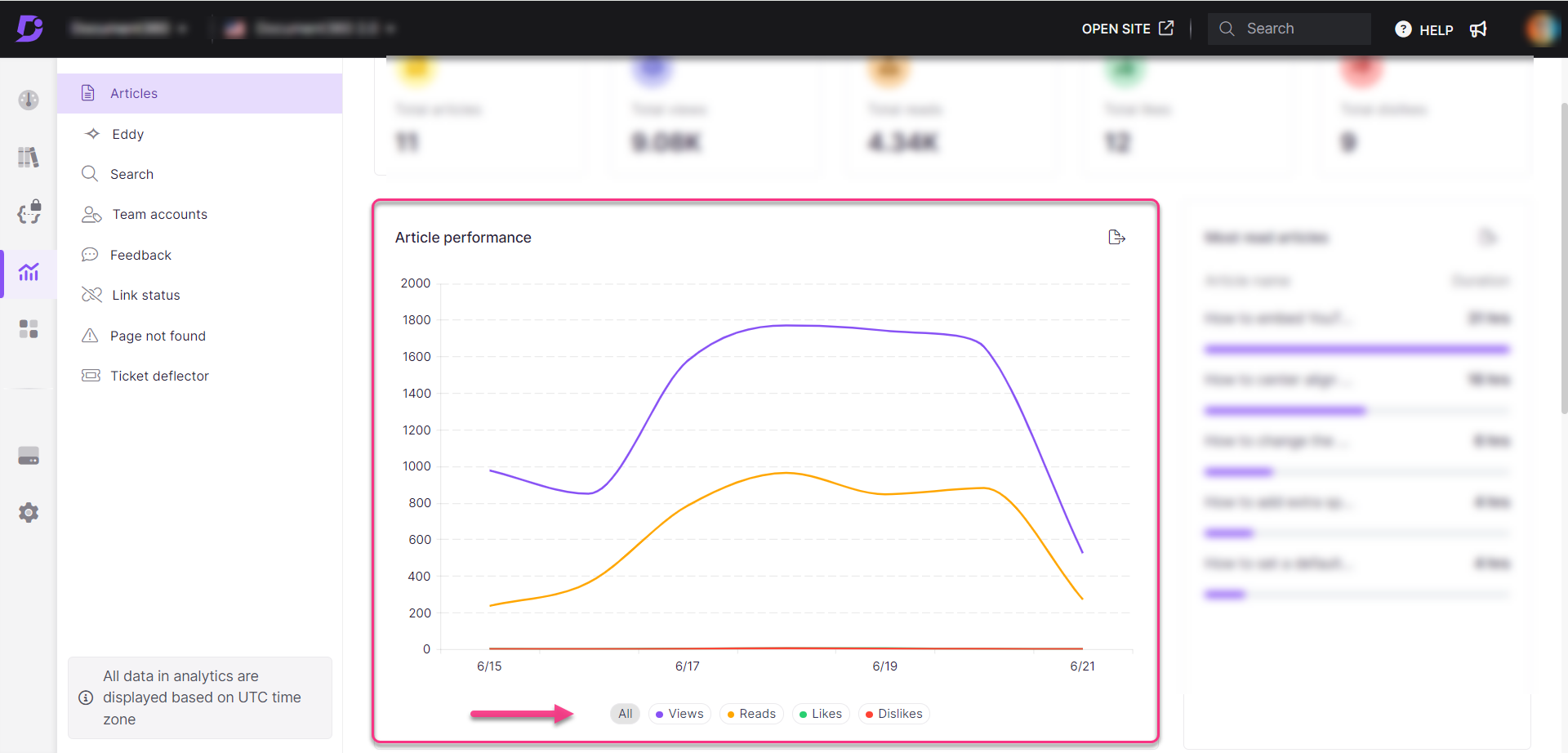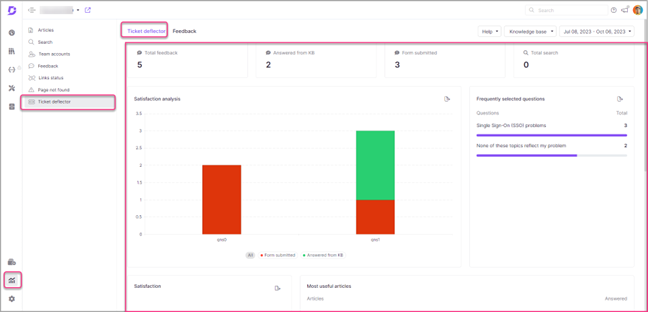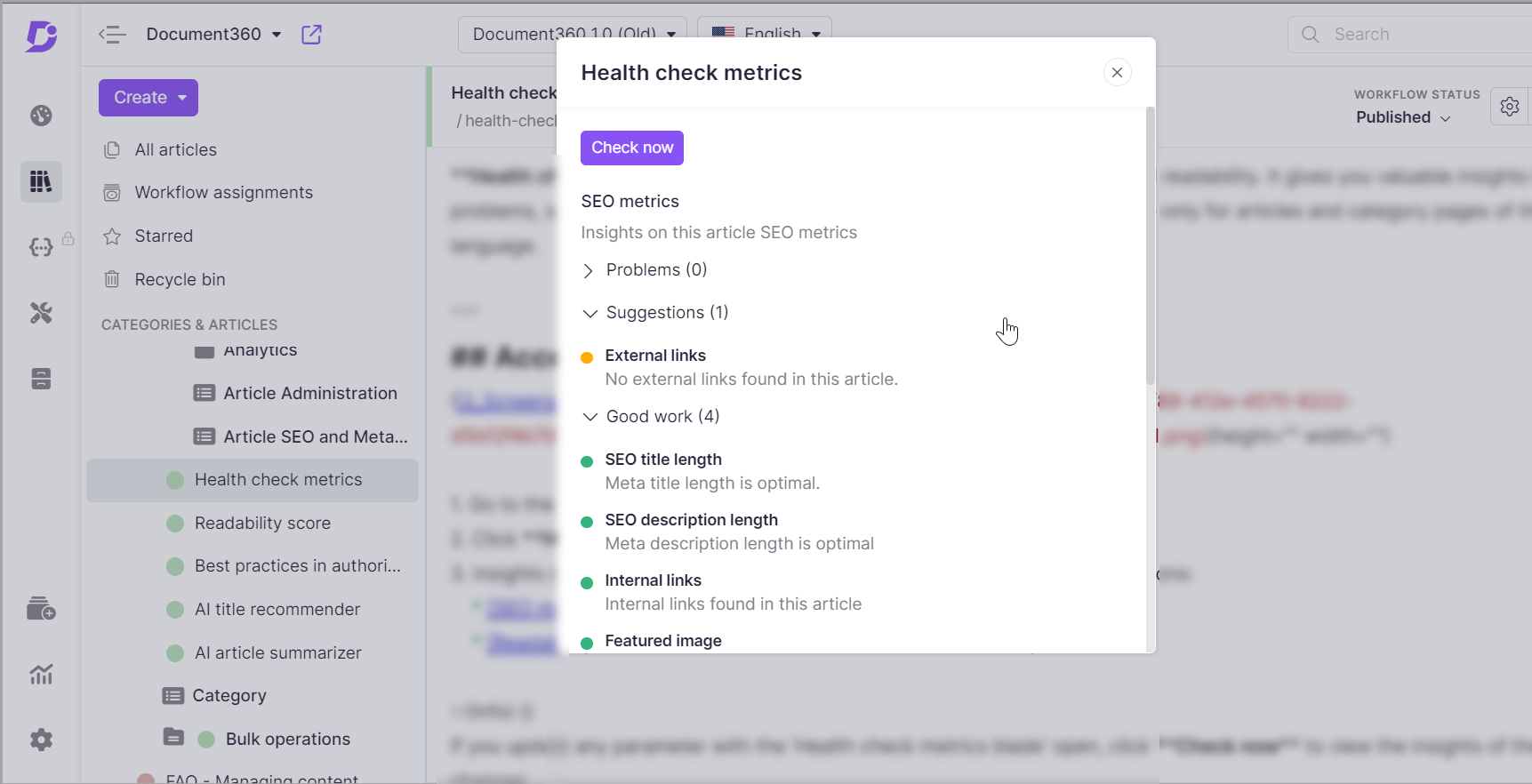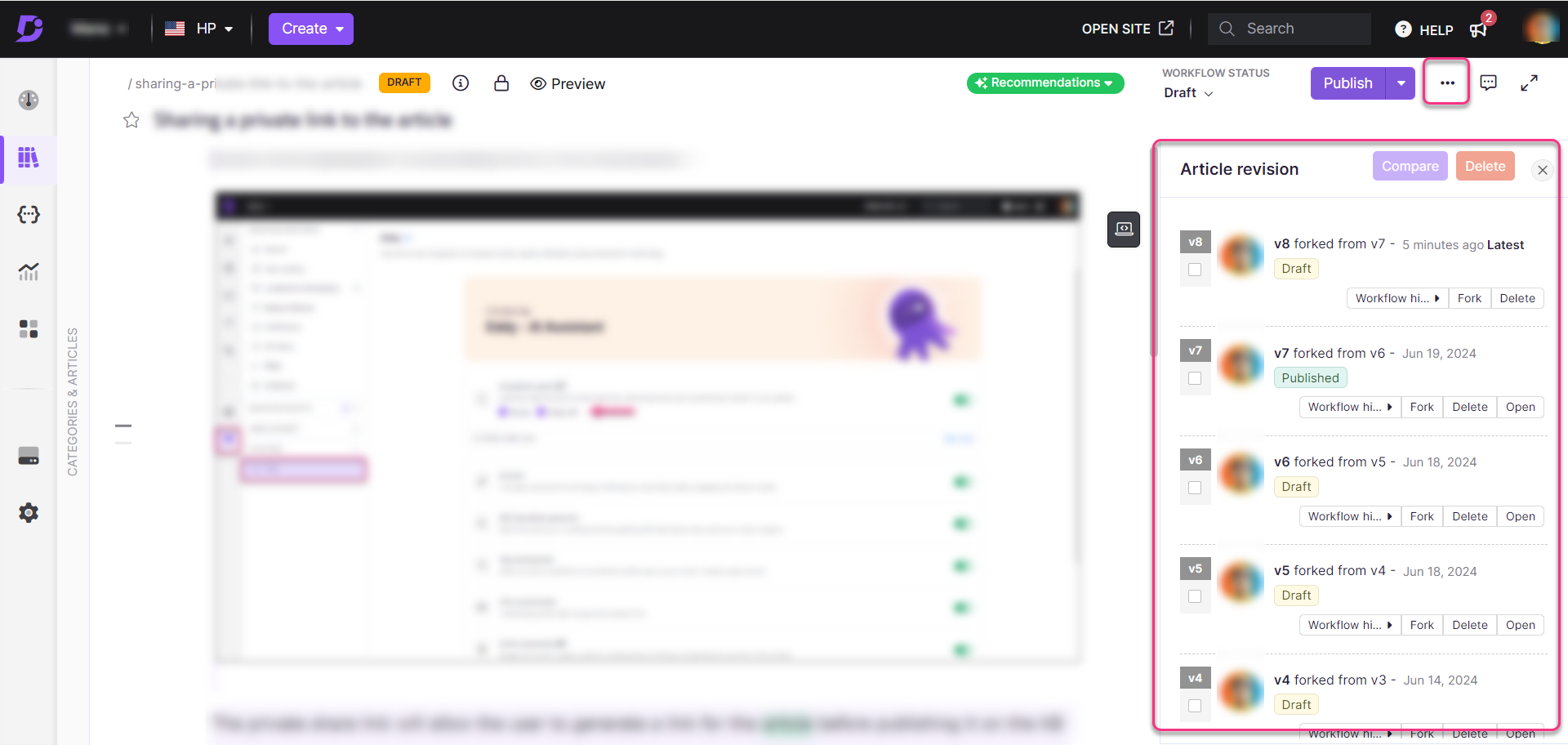Quick question: How do you know when users like your technical content, and how do you know your content performs well?
Without measuring the performance of your technical content, you have no idea how the content you’ve produced is working and making customers happy.
This is where KPIs come in.
Implementing clear and measurable KPIs helps you see the real performance of your content. Are your users happy with the content they’re getting? Can they understand the information clearly? Are they bouncing out as soon as they land? Is your content easily accessible?
All these questions will be answered when you have the right KPIs in place.
Why Measure Technical Documentation Performance?
Think about it: Every customer is different and has unique preferences. Some users prefer written content, while others want regular old videos and guides. To ensure an excellent user experience, your content needs to cater to all these diverse needs.
This is why analysis is key. Technical KPIs allow businesses to keep up with the varying demands of their users, making necessary changes to ensure a great user experience.
Let’s go a little further into why you need KPIs to measure the performance of your technical documentation.
To identify areas of improvement
Monitoring KPIs like user feedback and usage allows you to identify areas that need improvement.
User feedback metrics often reveal information gaps. Closing these gaps improves comprehension and user experience, ensuring your documentation remains valuable.
Usage metrics reveal how often users interact with your content, providing insight into its usefulness. Working on the utility of your content reduces the number of calls to the support team, saving time and costs while increasing user confidence and trust in the product.
Demonstrates the value of documentation
Measuring technical documentation’s performance shows its true value.
Metrics provide valuable insights into documentation tasks. You can determine how many documents you generate, modify, or evaluate during the review process. Metrics also reveal the impact of the documentation—total visits, page views, conversion rates, and self-service rates.
So, instead of guessing what your content is worth during your next meeting with stakeholders, you can present metrics that justify the resources spent on creating the content and demonstrate its impact on the overall user experience.
Drives product adoption
Evaluating the effectiveness of your technical documentation is critical to improving product adoption. Products with good documentation are easier for users to understand, which means a higher adoption rate.
Measuring the usage of troubleshooting guides and tutorials shows how many users are resolving issues on their own, which can help increase self-service and reduce customer churn.
Also, documentation metrics show how easily users update themselves with new product features, which leads to consistent and repeated product use.
Top 5 Important Technical Documentation KPIs to Measure
KPI #1. Documentation Usage Metrics
Documentation usage metrics show how well your documentation helps users. It shows how often users use and interact with your documentation, which tells you its usefulness.
Time spent on the reading section
The ”Time spent on the reading section” metric shows how long users read particular parts of your documentation. More time indicates that users find the information helpful and are trying to comprehend it well.
This metric helps determine content engagement and information richness. Reading time enables teams to identify the most popular topics and areas that need more attention.

Bounce rate
Bounce rate refers to the percentage of users that leave your documentation after viewing one page. It indicates whether users find what they need or encounter problems that cause them to leave.
A low bounce rate shows that users find content helpful and spend more time on your site. High bounce rates highlight areas that need optimization, thus improving page effectiveness.
KPI #2. Documentation Feedback Metrics
Documentation feedback metrics use user surveys, rating systems, and comment sections to gather insights and improve documentation quality.
User surveys
What better way to know how your users feel than to hear directly from them? User surveys are essential as they provide insights into how users perceive and engage with your documentation.
Companies use surveys to:
- Guide updates
- Track changes
- Ensure their documentation provides the necessary information to users
However, only 9% of respondents are willing to answer long surveys. Most will guess answers at random or skip questions altogether.
So, what can you do to enhance response rates?
- Keep it brief
- Ask clear and specific questions
- Provide incentives
- Ensure it is mobile-friendly
- Personalize the appeal
User surveys are a powerful tool for improving your documentation by allowing you to gather direct feedback from users.
Rating systems
Rating systems help capture raw user feedback through the use of stars, thumbs up/down, or numeric scales. Respondents find them easy to complete, which promotes higher response rates and provides straightforward results.
Hints for implementing rating systems:
- Place them at the end of articles or sections.
- Make it possible for users to leave lengthy comments
- Make the rating system easily visible
- Take prompt action on low ratings to enhance user satisfaction
- Update users based on their feedback.
Rating systems are efficient and provide valuable insights that help improve documentation and user satisfaction.
Comment sections
Comment sections provide an open platform for readers’ thoughts and suggestions about the content. Real-time interaction speeds up updates and guarantees quick responses.
The main advantage of comment sections is the quick interaction. Users can provide their thoughts quickly, which is crucial for fast changes.
Comments also provide more than just ratings; they give detailed information that explains problems clearly and suggests solutions and the users feel like they are part of a larger group that values their participation.
Some of the most common problems identified through these comments. This means it needs fixing pronto! Such direct feedback helps keep documents sharp. Responding to comments, users feel that their input will be heard in the future.
Consider comment sections not just as feedback tools but as active, engaging communities that facilitate real-time interaction which leads to growth. Encourage users to participate in the documentation process and improve satisfaction.
KPI #3. Documentation Performance Metrics
How do you know users are benefiting from your documentation? Understanding documentation performance metrics helps you understand what your customers are looking for in your documentation. This metric will help you prepare and contribute more to your documentation.
Self-service rate
The self-service rate shows the number of users who find solutions in the documentation without getting any assistance from your support team.
Higher self-service rates are a sign that your documentation adds value to the users. They can find the answers, which benefits businesses by reducing the support load on customers.
Ticket deflection rate
Ticket deflection occurs when your users can find solutions within the documentation without the need to reach a helpline. A higher deflection rate means better documentation and low ticket volume.

In Document360, you can quickly gain insights into performance metrics straight from the dashboard. This helps you quickly fix the gaps in the documentation and enhance user experience.
Ticket deflection rate = Total users of your help center(s) ÷ Total users in tickets
Schedule a demo with one of our experts to take a deeper dive into Document360
Book A Demo
Conversion rate
Suppose you are working on the business side of your organization, especially in the SaaS industry. In that case, you will be able to see the number of visitors landing on the product documentation page and later converting to customers. This is the power of documentation; it helps acquire new customers and retain existing customers in both ways. High conversion rates suggest that the documentation is convincing and understandable.
This metric also helps improve the contribution to content and structure it, making it easy for users to use. Making the documentation more transparent and appealing enhances the conversion rate.
Periodic reviews and documentation updates can also achieve high conversion rates. This metric is essential when comparing the value of documentation to the business’s bottom line.
KPI #4. Documentation Quality Metrics
When it comes to technical documentation, quality is paramount. High-quality documentation ensures users can understand, access, and trust the information they need. Here are three essential quality metrics to measure:
Readability
The readability score shows us how easily users consume the content. High readability means a simple writing style that allows everyone to comprehend the information. Readability affects sentence structure, word choice, and clarity.

Readability scores can be improved with writing styles. Creating on-the-spot solutions with shorter sentences, having a good font size, and selecting the reading font also matter. In Document360 you can check the readability score in the portal when publishing the content.
Accessibility
No matter how good your documentation is, it is not accessible to the readers. If it is stored as informational silos, your organization is missing the business gain. Your documentation should be accessible to all users, and they should have no issues interacting with your content.
Making content more accessible opens the company up to a wider market. It is also good for business as it shows a willingness to make information accessible to all. It improves its use by users, satisfying the goal of making it usable to all necessary parties.
Best practices for accessibility include:
- Providing text descriptions for images
- Using simple, clear, and easy-to-understand language
- Presenting content in a structured manner
- Making it compatible with screen reading technologies
- Checking the website for compliance with WCAG guideline
- Performing accessibility testing
- Collecting user feedback on the site’s content to make it as accessible and easy to use as possible
Accuracy
Another important aspect of documentation quality is accuracy—why? It checks that the information is factual, current, and credible. Users believe in accurate and good content and are able to use it.
How can you enhance accuracy?
- Regularly check and revise documents.
- Verify all facts, figures, and instructions, and provide source links to support the third-party content.
- Test the documentation using feedback from real users and internal teams.
- Implement peer reviews to ensure oversight.
- Use version control tools to track changes.
Credible records eliminate mistakes and frustrations, increase credibility, and offer a reliable support source. Adhering to legal requirements is particularly important. Ensure that the information is well compiled to develop documents that users can rely on.
KPI #5. Documentation Collaboration Metrics
The documentation process is not one man’s job, collaboration is key. There are many touch points right from brain storing, to content contribution, review, and publishing. Here are two essential collaboration metrics to measure:
Version control activity
A version control system tracks all changes to a document. It maintains a comprehensive record of changes so teams can go back to previous versions if necessary. Who did what is easily shown so that people take responsibility for their actions. It helps avoid conflicts and mistakes.
Metrics to track include:
- Number of commits
- Contributor activity
- Merge requests.

Make sure every member of your team knows this system. Create clear workflows for different tasks. Monitoring the activities using dashboards. Perform peer reviews. Establish standards.
Results? Better teamwork, accuracy, transparency, efficiency, and reliability.
Review cycle time
Have you ever wondered how long it takes for your documentation to go through the draft process and be published?
That is where review cycle time comes in—it measures the time taken to prepare a document from its first draft to its approval.
Faster cycle time means quicker updates. It enhances team efficiency and guarantees that the correct new documents are produced. Slow cycle time means there’s work to be done with your documentation process.
Read more: Document Lifecycle: Ensuring Your Documentation Efficiency
Top 3 Metrics to Measure Documentation Business Impact
KPI#1 – Business Outcome Metrics
Business outcome metrics reveal if you’re meeting your organization’s goals. For example, reducing customer support tickets demonstrates effective documentation. High-quality documentation allows customers to self-serve, saving costs and improving satisfaction.
Impact on customer support ticket
How does this impact support tickets? When customers find answers themselves, they submit fewer tickets. This reduces the burden on support teams, allowing them to focus on complex issues.
Metrics like ticket resolution time and customer satisfaction scores show this impact. Fewer unresolved tickets and faster resolutions indicate efficiency.
In short, business outcome metrics guide improvements, enhancing customer satisfaction and loyalty.
Time to respond to customer feedback
Business outcome metrics measure how quickly support teams address customer feedback. Faster response times mean higher customer satisfaction and retention rates.
Efficient documentation allows support teams to find information quickly. This reduces response times. Quick responses improve customer satisfaction—who doesn’t love fast help?
To measure impact, collect baseline data on response times, track how often support teams use documentation, and compare response times over time.
KPI#2 – Customer Satisfaction
Customer satisfaction is key to understanding how well your documentation meets users’ needs. This KPI can be measured using customer satisfaction surveys and Net Promoter Score (NPS).
Customer satisfaction via surveys
You can send your users surveys asking them to rate their experience on the documentation and provide comments. These surveys gauge how well the documentation meets customer needs, clarity of information, and helpfulness.
For example, The American Customer Satisfaction Index (ACSI) smartphone ratings for 2024 show improvements for Apple and Samsung from customer satisfaction surveys. Apple increased satisfaction by 1%, while Samsung improved by 3%, reaching the top spot. These changes are due to focused improvements in user interface design and display quality based on survey feedback.
NPS score
NPS reflects the quality and effectiveness of documentation. Higher scores mean customers find the documentation helpful and perceive it positively.
NPS surveys have limitations. Users often hate answering surveys, especially long ones. Agents dislike giving surveys as it adds stress and may inaccurately reflect their performance. Low response rates and biases make analyzing NPS data difficult. Some companies only survey happy customers, which skews results.
Combining NPS with AI tools can improve operational efficiency and customer experiences. Good documentation reduces the effort to solve problems, turning detractors into promoters. Consistent documentation ensures customers receive the same level of support each time.
KPI#3 – Financial Metrics
Financial metrics, such as operations cost, are essential for measuring the financial impact of documentation.
Operating Cost Reduction
Financial metrics directly influence operating cost returns by providing clear insights into where money is being spent and how efficiently resources are used.
When you measure metrics like revenue, expenses, and profit margins, you’re not just crunching numbers; you’re uncovering opportunities to streamline operations. It’s like fine-tuning a machine—each adjustment potentially saving costs and boosting returns.
For instance, monitoring metrics such as cost per content produced or overhead costs reveal areas ripe for optimization. Are you overspending on technical writers? Are there inefficiencies in documentation processes? These insights guide decisions to cut unnecessary expenses and maximize returns.
Good to know: Operating cost reduction refers to the savings achieved by a company through efficiencies and improvements in its operations.
Read more: How to Measure the Value of Documentation?
How can Document360 help you to track documentation metrics?
Document360 supports technical writers with robust documentation tools for documentation and collaboration. Here are some features to help you track documentation metrics:
- Comprehensive Analytics Dashboard tracks views, visitors, and URL sessions, pinpointing popular content areas.
- User Feedback and Ratings gather input to enhance content quality.
- Search Analytics identifies high-demand topics.
- Version History and Comparisons ensure document integrity.
- Heatmaps visualize user interaction for optimized content layout.
- Integration with Tools like Google Analytics links metrics to business goals.
- Custom Reports and Exportable Data facilitate team collaboration.
Conclusion
Technical documentation is more than words—it empowers users and drives business success.
By tracking KPIs like usage, feedback, and collaboration, companies refine content to meet user needs and goals. These metrics pinpoint where improvements are needed for accurate, accessible documentation. Whether improving readability, gathering user feedback, or streamlining collaboration, tracking KPIs boosts satisfaction, cuts costs, and increases adoption.





 –
– 

